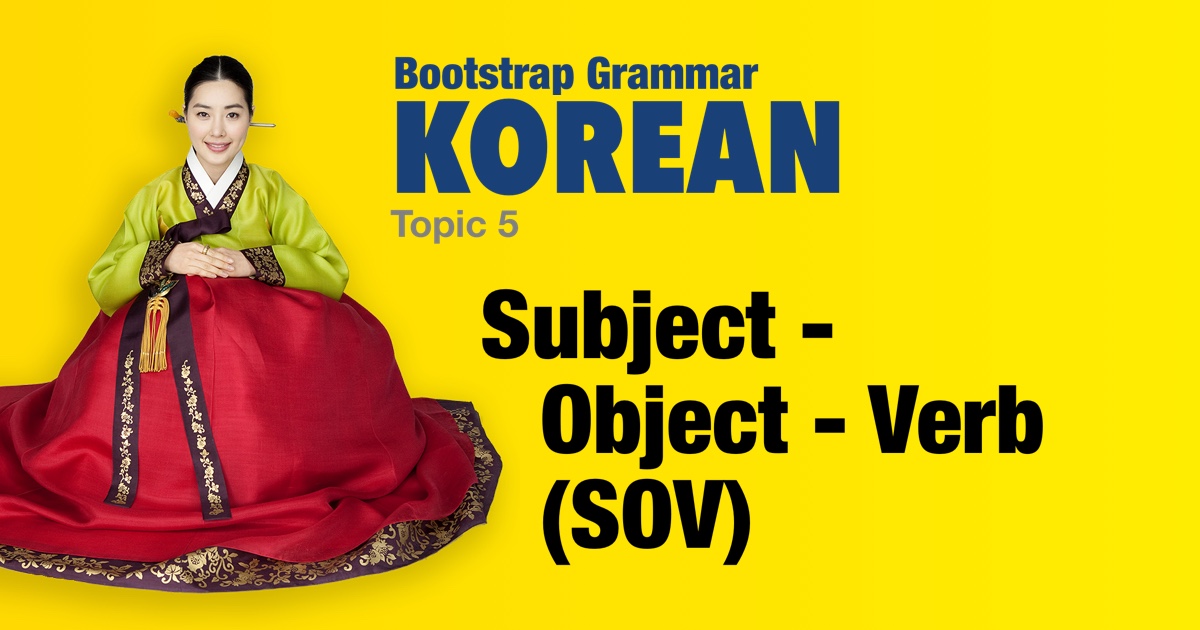Korean grammar - Subject - Object - Verb (SOV) |
|||
|
|||
We have already seen that in Korean the verb typically comes at the end of a sentence. More generally the order of Korean sentences is <subject> <object> <verb>. • The subject is what is doing the verb. For example: the person 지아 (Jia) • The object is what the verb is acting on. (for example: 책 - 'a book') • The verb is the doing or action word (for example: 있어요 - 'has' or ' possesses') So the order is: <Jia> <book> <has> OR <지아> <책> <있어요>. -- And with the topic and subject markers: <지아는> <책이> <있어요>. |
| Examples: | |
|
지아는 책 있어요.
Jia has a book.
|
|
|
학생은 가방 있어요.
The student has a bag.
|
|
|
선생님은 자동차 있어요?
Does the teacher have a car?
|
|
|
서준이는 남동생 없어요.
Seojun doesn't have a younger brother.
|
|
|
곰은 꼬리 없어요.
The bear doesn't have a tail.
|
|
|
남자는 우산 없어요.
The man doesn't have an umbrella.
|
|
|
광일이는 자전거 있어요?
Does Gwangil have a bike?
|
|
|
운전사는 전화 없어요.
The driver doesn't have a phone.
|
|
|
이것은 꽃이에요.
This is a flower.
|
|
|
학생은 한국 사람이에요.
The student is Korean.
|
|
|
존은 영국인이에요.
John is British.
|
|
|
내일은 금요일이에요.
Tomorrow is a Friday.
|
|
|
아버지는 변호사에요.
(My) father is a lawyer
|
|
 |
|




